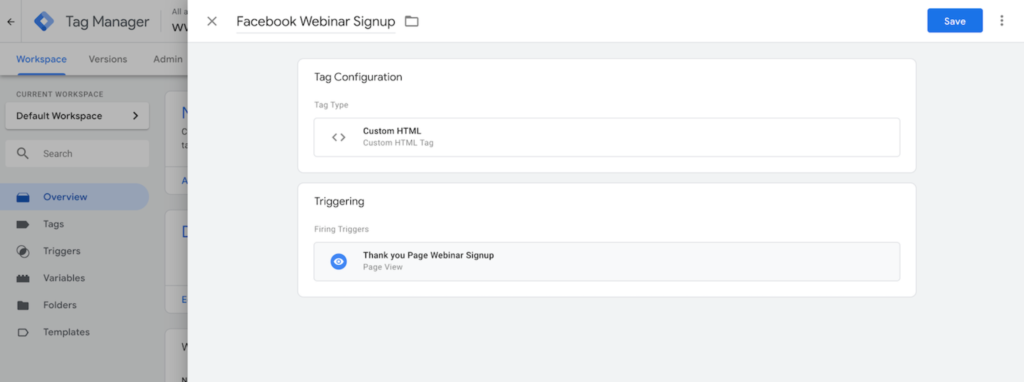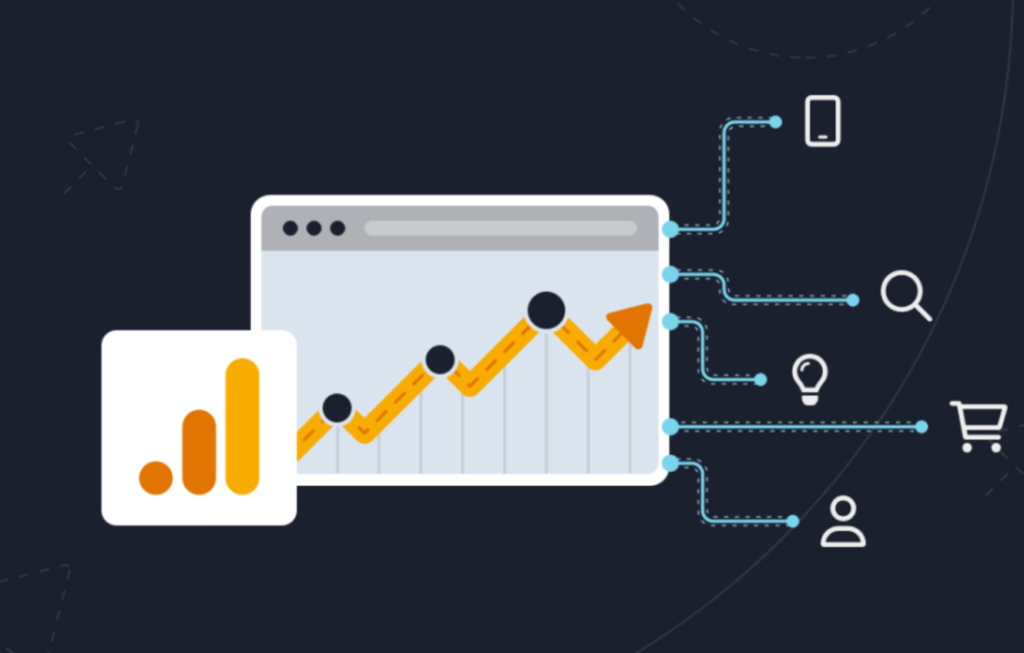In the rapidly evolving landscape of digital marketing, where every click and interaction holds the potential to convert a visitor into a customer, the role of conversion tracking in analytics emerges as a crucial element. This comprehensive guide aims to unravel the intricacies of conversion tracking, shedding light on its significance, best practices, and how it can propel your business to unprecedented success.
What is Conversion Tracking?
Conversion tracking is a fundamental aspect of digital marketing analytics, serving as the pulse that gauges the effectiveness of various marketing strategies. At its core, it involves the systematic monitoring and analysis of user actions, aiming to identify and measure specific outcomes that align with business goals. These outcomes, often referred to as “conversions,” can encompass a range of activities such as completing a purchase, submitting a form, signing up for a newsletter, or any other predefined action that signifies a positive interaction with the marketing efforts.
The primary objective of conversion tracking is to provide businesses with valuable data and insights into the performance of their marketing campaigns. By understanding how users engage with digital content and measuring the success of desired actions, marketers can refine their strategies, optimise their campaigns, and allocate resources more effectively.
Types of Conversions
Types of Conversions acknowledges that not all user actions are of equal significance for a business. Different conversions hold different levels of importance based on the overarching goals and objectives.
- Primary Conversions:
- Sales: In e-commerce, the ultimate goal is often a completed sale. Tracking and analysing the journey from product view to purchase provide insights into the effectiveness of the sales funnel.
- Lead Generation: For businesses focusing on lead acquisition, conversions may revolve around form submissions, trial sign-ups, or other actions indicating a potential customer’s interest.
- Engagement Conversions:
- Content Consumption: Platforms emphasizing content delivery may prioritise conversions related to user engagement, such as page views, time spent on site, or interactions with multimedia elements.
- Social Media Interactions: For businesses leveraging social media, conversions could include likes, shares, comments, and other social interactions that contribute to brand visibility and audience engagement.
- Subscription Conversions:
- Newsletter Sign-ups: Building a subscriber base for newsletters or updates is a valuable conversion for content-driven platforms, enabling ongoing communication with an interested audience.
- Membership Registrations: Some businesses prioritise conversions related to membership sign-ups, creating a sense of community and loyalty among users.
- Educational Conversions:
- Content Downloads: Educational platforms may consider downloads of resources, such as whitepapers or guides, as significant conversions, indicating a user’s interest in in-depth information.
- Course Enrollments: Conversions could also involve users enrolling in educational courses or programs offered by the platform.
- App-Related Conversions:
- App Installs: For businesses with a mobile presence, conversions might include app installations, reflecting user interest in accessing content or services via a dedicated mobile application.
- In-App Actions: Tracking specific actions within the app, such as completing levels, making in-app purchases, or achieving milestones, can provide insights into user engagement.
Recognising and categorising these diverse types of conversions allows businesses to tailor their analytics approach. By assigning varying levels of importance to different conversions, marketers can develop a more nuanced understanding of user behaviour, refine their strategies accordingly, and measure success in a context-specific manner. This approach contributes to a more comprehensive and effective optimisation of digital marketing campaigns.
The Role of Conversion Tracking in Marketing Strategy

Aligning Business Goals with Conversions
Aligning Business Goals with Conversions underscores the importance of synchronising overarching business objectives with specific conversion metrics. It involves a strategic mapping of what constitutes success for the business and how user actions align with these objectives. For instance, if the primary business goal is revenue generation, conversions may be centered around completed sales, while a focus on brand awareness could prioritise social media engagement or content shares. This alignment ensures that the tracking of conversions is directly tied to the core goals of the business, providing a clear and actionable framework for marketing strategies.
Customer Journey Mapping
Customer Journey Mapping delves into the intricate process of understanding and visualising the various touchpoints a customer experiences on their path to conversion. Conversion tracking plays a pivotal role in this by providing data on user interactions at different stages of the journey. From the initial awareness phase to the final conversion, businesses can map out the customer’s experience, identify potential friction points, optimise key moments, and deliver a more seamless and personalised journey. This holistic understanding of the customer journey allows for strategic interventions, ensuring that marketing efforts are not only effective but also tailored to meet the evolving needs and expectations of the target audience.
Implementing Conversion Tracking Tags

Implementing conversion tracking tags is a crucial step in leveraging the power of conversion tracking within digital marketing. Conversion tracking tags are snippets of code or tracking pixels that are strategically placed on a website or within specific pages. These tags allow businesses to monitor and analyse user interactions, providing valuable data that informs the success of marketing strategies. Here’s a breakdown of the key aspects of implementing conversion tracking tags:
Selecting the Right Conversion Tracking Platform:
Choose a reliable conversion tracking platform that aligns with your business needs. Popular platforms include Google Analytics, Facebook Pixel, and various other analytics tools provided by advertising platforms.
Identifying Key Conversion Events:
Define the specific actions or events that you want to track as conversions. These could include completed purchases, form submissions, app installations, or any other user actions that align with your business goals.
Generating Tracking Codes:
Once the conversion events are identified, the tracking platform will generate unique tracking codes or tags for each event. These codes are snippets of JavaScript or other programming languages that need to be placed on the relevant pages where the conversions occur.
Placing Tags on Website Pages:
Integrate the generated tracking codes into the HTML of the corresponding website pages. This may involve placing codes in the header, footer, or specific sections of a page, depending on the tracking platform and the nature of the conversion event.
Testing and Validation:
After implementation, thoroughly test the tracking codes to ensure they are firing correctly and capturing the intended user actions. Most tracking platforms provide testing tools or features to verify that the tags are working as expected.
Dynamic Value Tracking:
For e-commerce businesses, consider implementing dynamic value tracking to capture the monetary value of each conversion. This enhances the granularity of your data and allows for a more detailed analysis of ROI.
Cross-Device and Cross-Platform Tracking:
Ensure that your conversion tracking is set up to account for users accessing your content across different devices and platforms. This holistic approach provides a comprehensive view of user interactions and conversions.
Regular Maintenance and Updates:
Periodically review and update your conversion tracking setup to accommodate changes in your website structure, new conversion goals, or updates from the tracking platform. This ensures the continued accuracy and relevance of your tracking data.
Privacy and Compliance:
Adhere to privacy regulations and guidelines, such as GDPR or CCPA, when implementing conversion tracking. Clearly communicate your data collection practices to users and provide options for opting out if required by law.
Effective implementation of conversion tracking tags empowers businesses to make data-driven decisions, optimise marketing efforts, and maximise the return on investment. It is a foundational element for understanding user behaviour, refining strategies, and ultimately achieving business objectives in the dynamic landscape of digital marketing.
Consumer Psychology and Conversion
Understanding consumer psychology is integral to optimising conversion rates in the digital realm. Consumers make decisions based on a myriad of psychological factors, and marketers who grasp these intricacies can tailor their strategies to enhance user experiences, build trust, and ultimately drive conversions.

The Psychology of Clicks
The Psychology of Clicks delves into the subtle yet influential aspects of user behaviour when interacting with online content. Clicking is not merely a mechanical action but a cognitive process influenced by psychological triggers. Factors such as visual appeal, compelling copy, and the placement of calls-to-action play a pivotal role in prompting users to click. Additionally, principles of urgency, scarcity, and social proof contribute to the psychology of clicks. Urgency creates a sense of immediate action, scarcity taps into the fear of missing out, and social proof leverages the influence of others on decision-making.
Understanding the cognitive journey a user undergoes from the initial exposure to a clickable element to the actual click is crucial. Marketers can optimise this process by aligning design elements, messaging, and psychological triggers to guide users seamlessly toward desired actions. By incorporating psychological insights into the design of landing pages, advertisements, and calls-to-action, marketers can increase the likelihood of users clicking and progressing further along the conversion funnel.
Building Trust through Tracking
Building Trust through Tracking explores the delicate balance between utilising tracking mechanisms for conversion optimisation and establishing trust with consumers. While conversion tracking provides valuable data for marketers, users may express concerns about privacy and data security.
To build and maintain trust, transparency is key. Clearly communicate to users the types of data being tracked, the purposes for which it is used, and how it benefits them. Highlighting the value of personalised experiences, relevant recommendations, and improved user journeys can mitigate potential apprehensions.
Moreover, offer users control over their privacy settings, allowing them to opt out of certain tracking if they wish. Explicitly state your commitment to data security and compliance with privacy regulations, reassuring users that their information is handled responsibly.
Incorporating trust-building elements into the user interface, such as security badges, privacy policy links, and clear explanations about data usage, contributes to a positive user experience. When consumers feel confident that their data is handled ethically and responsibly, they are more likely to engage with the tracking mechanisms, contributing to a more accurate and comprehensive understanding of user behaviour.
The journey of digital marketing is dynamic, and staying ahead requires not only embracing new technologies but also understanding the profound impact of data-driven decision-making.
Conversion tracking is more than a metric; it’s a compass guiding your business through the intricate digital landscape. Transform your data into actionable insights, your clicks into conversions, and your business into a powerhouse of success. The journey is yours to chart, and conversion tracking is your unwavering guide. Now, go forth and optimise.

